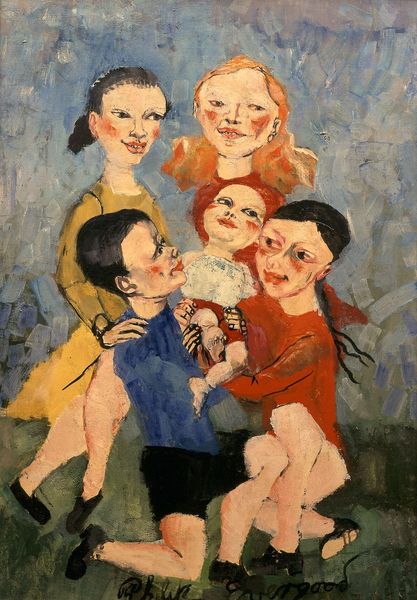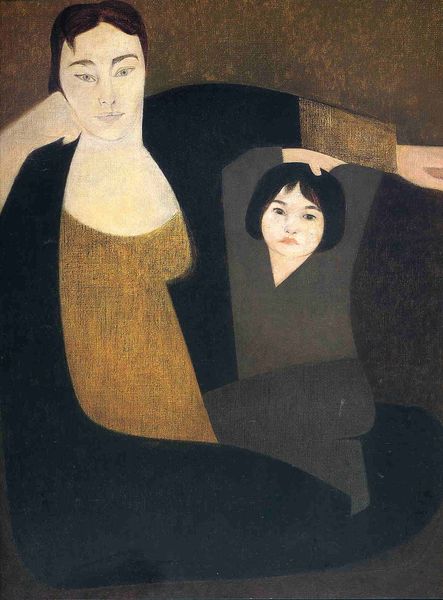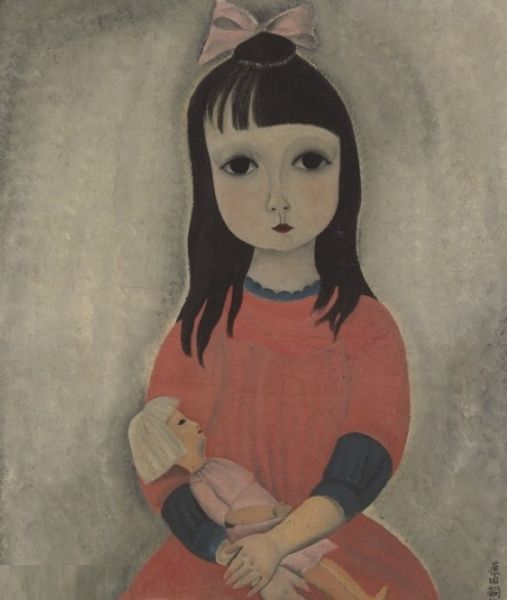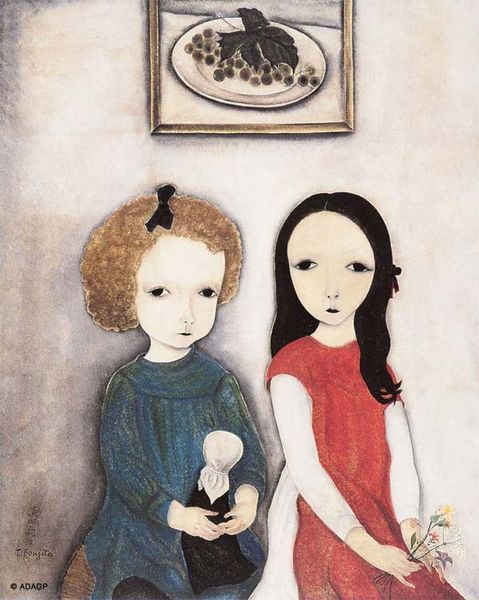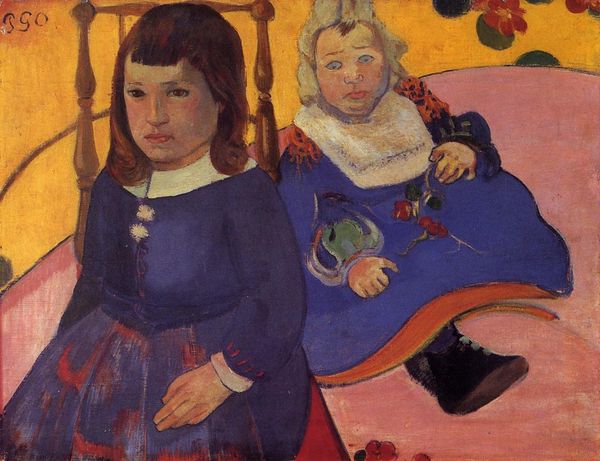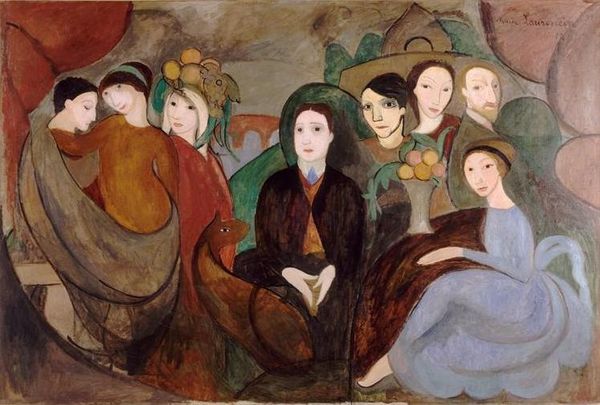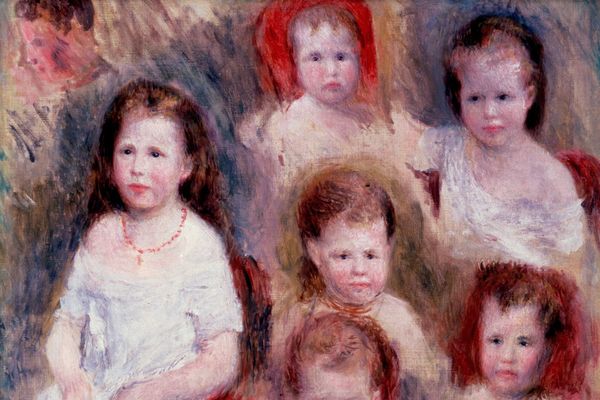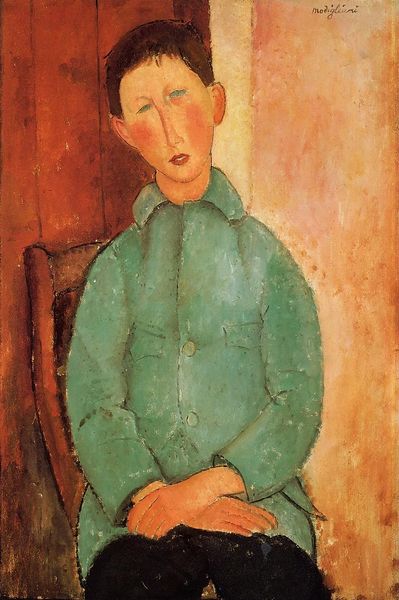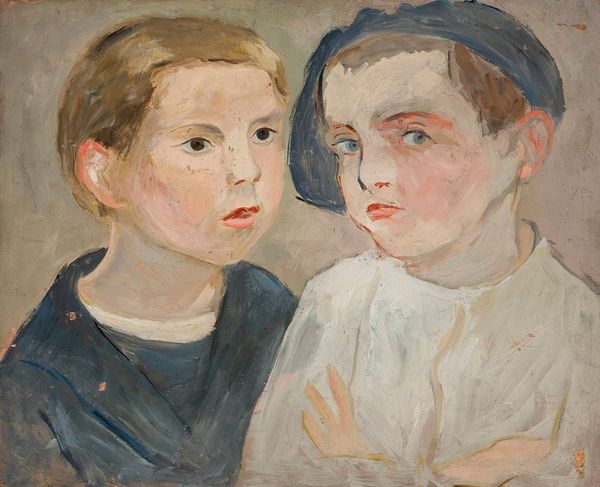
painting, oil-paint
#
portrait
#
painting
#
oil-paint
#
green tone
#
figuration
#
oil painting
#
child
#
intimism
#
group-portraits
#
portrait art
#
modernism
Copyright: Public domain US
Curator: I find this 1918 oil painting, "Children and Doll" by Tsuguharu Foujita, strangely unsettling. The subdued palette gives the whole composition an almost ghostly quality. Editor: The artist has certainly created a particular tension here. There’s an almost dreamlike feel— the subtle tonal modulations, the stillness in their gaze, a definite Modernist sensibility playing with conventions of representation that resonates within a society shaken by conflict. Curator: The way the figures are arranged, especially, fascinates me. There's the interplay between flatness and depth. Note the very shallow recession of space. Also the artist’s unique approach to color; for example, the flattened dark tones contrasting against the very luminous whites and pastels to create this sense of form. What's your take? Editor: Well, Foujita's time in Paris had exposed him to the changing representations of childhood and family emerging from modern art. Think of Picasso’s rose period or Derain’s distortions. This piece reflects his negotiation of Western influence alongside his Japanese artistic training. We’re seeing the private sphere, a growing concern with the role of childhood in a fractured society— notice the doll held centrally, almost like a displaced child, symbolizing changing familial relationships and emerging modern anxieties. Curator: I can definitely see that, considering the political turbulence of the period; a commentary of sorts, perhaps on a lost sense of innocence reflected in the stylized faces, particularly in how they diverge from more traditional portraiture of children. It has such an impactful, enigmatic presence, that engages you purely through compositional nuance. Editor: And while focusing on Foujita's painterly style, it's crucial to remember the cultural conversations of his time— postwar concerns about family, gender roles, and cultural hybridity played out through the intimate moments of the artist’s private life made public through his modernist idiom. I appreciate how both can intersect in the same pictorial space. Curator: Absolutely. Looking at it again, one appreciates that Foujita’s aesthetic innovations, paired with social considerations make for quite a powerful statement about his era. Editor: It certainly reframes one’s perception of the artist himself; far more intricate, perhaps, than merely an expatriate adapting to prevailing fashions.
Comments
No comments
Be the first to comment and join the conversation on the ultimate creative platform.
